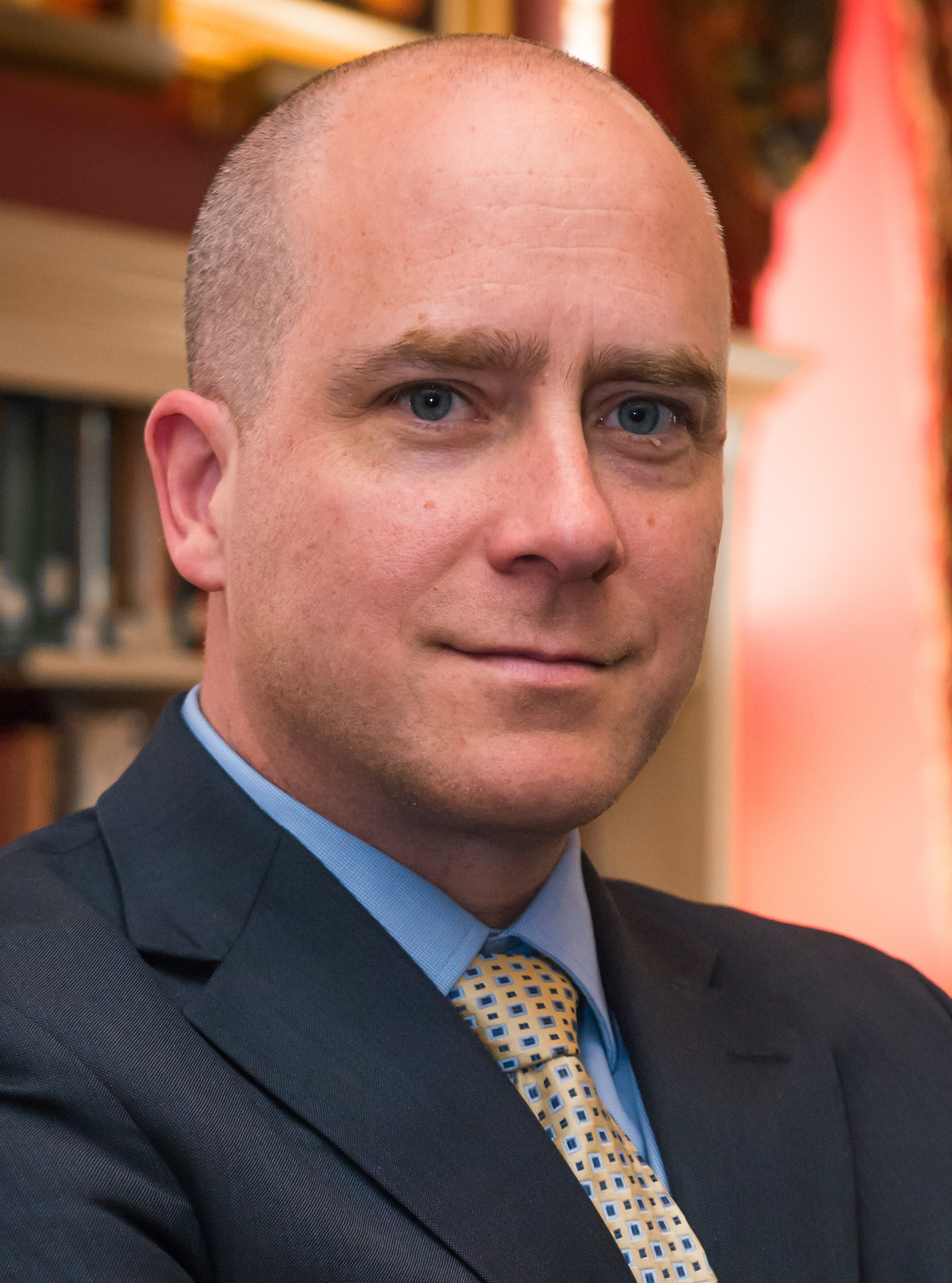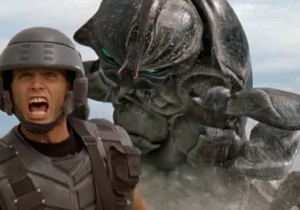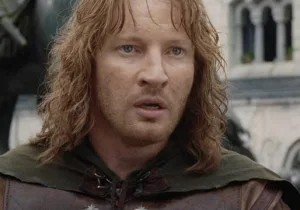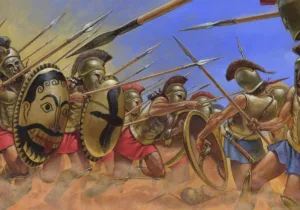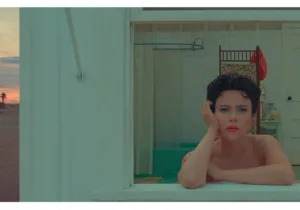Peter Jackson, the celebrated filmmaker best known for The Lord of the Rings trilogy (though, really, King Kong is the masterpiece) recently observed that he owes his life to a German machine gun.
Jackson’s grandfather, Sgt William Jackson, fought in many of the major battles of the war, including Gallipoli, where he earned a Distinguished Service Cross. At the Somme, where, curiously, he would have fought alongside JRR Tolkien, he was so badly injured that he was forced to convalesce in England, where he met Jackson’s grandmother. They married in 1917, and had five sons. “It’s weird,” Jackson laughs, but “if that machine gunner hadn’t hit my grandfather, I wouldn’t be alive!”
The history had an effect. “I grew up with the war in my household,” Jackson notes. Subsequently, since his early childhood Jackson has been obsessed with the Great War, and has amassed a remarkable private collection of historic artifacts from the conflict. Following a proposal from the The Imperial War Museum (IWM) in London, Jackson’s enthusiasm, knowledge, and memorabilia would prove invaluable in the lead up to the centenary observances of the Armistice. The result is They Shall Not Grow Old, Jackson’s major new documentary about the men who fought the Great War.
It wasn’t supposed to be so magnificent a project. A few years back, the IWM, in collaboration with the WW1 centenary arts commission 14-18 NOW, invited Jackson to consider what could be done with archival film footage of the Great War in order to celebrate, in some original way, the 100th year anniversary of the war’s conclusion. They originally suggested he produce a 30-minute documentary. After experimenting with some ideas using modern technologies to enhance the quality of the old footage, Jackson countered by insisting on something three times that length.
Jackson’s idea was to honor the men who fought by harnessing the power of the 21st-Century computer technologies that he had utilized to such great effect in his blockbuster epics to remedy all the shortcomings of vintage film techniques. In this way he would “reach through the fog of time and pull these men into the modern world, so they can regain their humanity once more.” Four years later, the results, Jackson enthuses, are “unbelievable.”
He said, “We [made] this grainy, flickery footage look like it was shot yesterday with high-definition cameras.” It was painstakingly complex work. Because the original cameras were hand-cranked, most of the footage has an odd “Charlie Chaplin-like” jittery, grainy, quality to it. Jackson’s team was able to eliminate this artificial dimension, adding frames to slow it down, sharpen the resolution, remove scratches, eliminate the grains, increase its perceived depth, and bring it to full color.
All the while they were charting largely new territory. For instance, while Jackson noted that the hard work was going from “bad black-and-white to good black-and-white”, the coloring, while technically simple, is profoundly labor-intensive, is an amazing achievement. It is not the garish wash-jobs that too often accompany colorization. Instead, Jackson’s team hand-painted the film, reconstructing it frame-by-frame, using Jackson’s extensive artifact collection as a color guide.
Of course, the vintage film was also silent. So, they reconstructed every single sound that every frame of footage demanded—again using Jackson’s storehouse of equipment as sound-sources. Jackson even employed forensic lip-readers to establish what words were being spoken, and then hired actors to give them voice. Here, his dedication to accuracy extends down to the regional accents, which he was often able to fit to the regimental badges visible on the caps of the speaking men. Jackson’s instructions to his sound team were straightforward: “I wanted viewers to believe a sound recordist had accompanied the soldiers out on the battlefield.” After hearing the soundtrack, we can be forgiven for thinking one had.
Taken together, Jackson’s restoration of the century-old footage allows the chronological distance between then and now to essentially vanish. We are able to see the men as they saw themselves. “You can actually read their faces,” Jackson observed. “You can even take a guess at what kind of people they were. Their humanity just jumps out at you. The best thing we could do to memorialize these soldiers was to try and bring some of their humanity back into the world again. To stop them from being a black-and-white cliché.”
Structurally, the film follows a rough overview of the soldier’s journey from recruitment to training, transport to France to the experience of the trenches, to battle and injury or death, to rotations off the front and periods of recuperation, to homecoming. Accompanying the footage are voiceovers culled from hundreds of hours of veteran interviews recorded in the decades after the War. Together, these techniques allow the life of the British soldier in WW1 to come alive.
In telling his story, Jackson utilizes a number of techniques to give the impression that we are following the same band of brothers. In one dreadfully haunting sequence, he moves from images of men laughing in a moment of restful gaiety to images of dead soldiers, each of whom bear at least superficial similarities to one of the men we’ve just seen laughing. That they really are the same men is doubtful, but the result is deeply effective.
Some might quibble with such techniques—or tricks. But while Jackson has labored to get the details right, that is not quite the same thing as trying to get all the details. No, we’re not always quite sure if the image we’re seeing is Second Ypres, or the Somme, or Mons. We’re not always sure if the voiceover we’re listening to is archived audio from interviews or contemporary actors. But to complain about this is perhaps to miss the point. Jackson is not giving us a documentary history. He is giving us an impression of the human experience shared by the boys who fought the War to End All Wars.
Jackson took for his title a line from the English poet Laurence Binyon. Binyon, Oxford educated in the early 1890s, was already a well-regard poet working at the British Museum when the War broke out. He became an orderly in the Red Cross and served from 1914 to 1918, including time on the front in 1916. His experiences fueled at least four books of verse, one of which includes “For the Fallen,” arguably his most famous piece. It contains Jackson’s eponymous phrase:
They shall grow not old, as we that are left grow old:
Age shall not weary them, nor the years contemn.
At the going down of the sun and in the morning
We will remember them.
Jackson, following Binyon, gives the titular phrase a double meaning. More than 744,000 British troops would die in the First World War. While not all were killed in the prime of life, certainly all fell far short of what could be fairly called a full life’s allocation of years. That’s an occasion for undiluted sorrow. But the second meaning suggests something more, if only slightly, hopeful. Jackson’s artistic achievement offers a certain immortality to the boys in the cinematic frames, a kind of preservation. Having given them their color back, and their voices and surrounding sounds, Jackson has returned them to their living context. And now our memories of them might remain evergreen.
We shouldn’t get carried away with this line of thinking. Binyon’s poetry, while maintaining a vision of the War as a noble cause, became noticeably less sentimental as the cataclysm wore on. Rightly so, the poetry maintained an indefatigable realism. Similarly, there is nothing platitudinous about Jackson’s portrayal. Things trite do not belong in any remembrance of that, or any other, war.
Indeed, the note that Jackson manages to strike is perhaps best captured by the first-person accounts he uses to narrate the film. These narratives, recorded after the Armistice, naturally give the film an overall emphasis on those who survived. Thus, these survivors help set the terms for how we ought to view the film and, by extension, the experience of the War itself.
What we find are narrated memories that are sometimes jarringly upbeat, especially when coupled over grim images such as rotting corpses half-submerged, in a tangle of mangled horses, in the mud and mire of the battlefield. Certainly, Jackson was selective in his choice of narrators, and, likely, the veterans who agreed to do such interviews in the first place were of a particular sort. But there seems to be no equivocation here nor anything deceitfully left out. The results are somewhat surprising. The veterans remember the horrors, but they do not exclusively dwell on them. They remember also the simpler, more pedestrian moments of a life lived in wartime. They even speak with a certain fondness for it all—not only for their friendships and the satisfaction of good service, but for the “tremendously exciting” and even “enjoyable” event itself.
Nor does Jackson shy away from the fact that for many of the soldiers the return home was almost as grim as the front. Often finding only record unemployment and poor prospects, many of the men express something of a preference for the fighting. In short order, the viewer gains the impression that, for some, the war was, among much else, an exhilarating way out of a mundane existence and into world in which they could be significant.
This speaks, perhaps, to not just the tremendous resiliency of the human spirit, but of the notion that many of those young Englishmen had every confidence that what they were doing was noble, and good, and right to do. Simply: it worth being done. Their testimonies suggest that there is a kind of jocularity that comes from moral confidence and fidelity to moral duty. Even when lived out in the midst of a hell on earth.
The sense of this is something we should not lose, even as we rightly depict and recognize the horrors of battle. Jackson’s masterly film is a helpful means for showing us how to strike such a balance.
—
Marc LiVecche is the executive editor of Providence and the McDonald Visiting Scholar at the McDonald Centre for Theology, Ethics, and Public Life, Christ Church College, Oxford.
